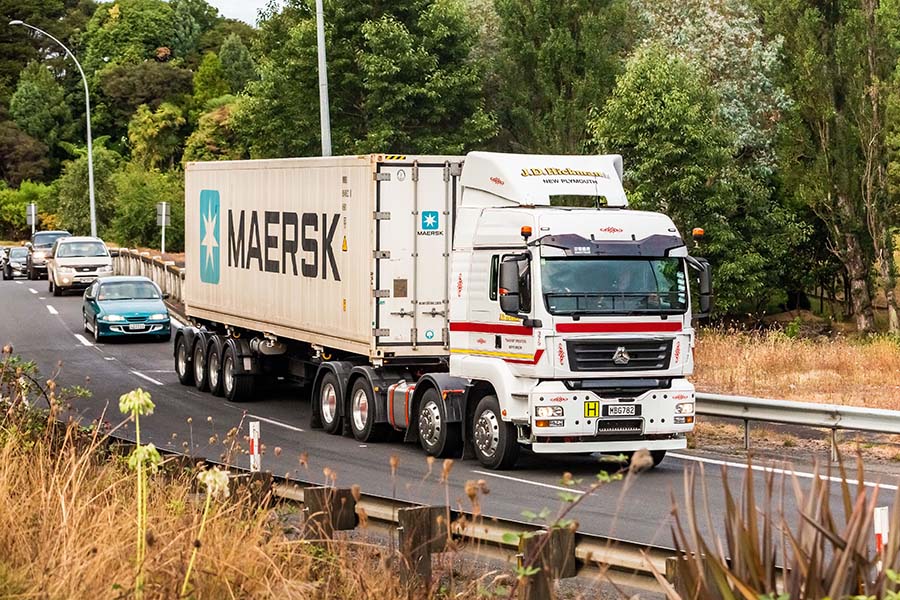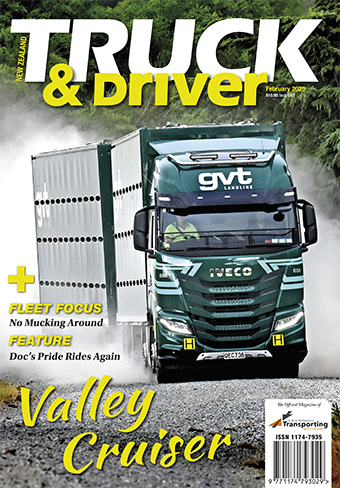Ia Ara Aotearoa Transporting New Zealand News


Investment in road maintenance critical to economic recovery
The Road Transport Forum recently joined with the Association of Consultants and Engineers, the Automobile Association, Civil Contractors New Zealand, the Employers and Manufacturers Association and Infrastructure NZ to demand urgent action be taken over the state of our roads and for increased investment in the maintenance of road surfaces.
The scale of the problem was starkly illustrated by Waka Kotahi NZ Transport Agency’s (NZTA) recently published National Pavement Condition Report.
Between 2008-‘09 and 2018-‘19, the volume of resurfacing work completed was 33% below NZTA’s own targets for the maintenance of a safe network. Over the same period, the volume of foundation replacement work was a whopping 50% below NZTA targets.
Since 2015 the proportion of the road network not meeting the minimum standard for skid resistance has more than doubled to over 500 lane kilometres; the average seal life remaining has reduced by 50%; and four out of five measures of roughness and rutting are worse by an average of 14%.
“Even for those who don’t fully understand the science behind road engineering – and I count myself in that category – these are extremely concerning figures,” says RTF chief executive Nick Leggett.
...The scale of the problem was starkly illustrated by Waka Kotahi NZ Transport Agency’s (NZTA) recently published National Pavement Condition Report.
Between 2008-‘09 and 2018-‘19, the volume of resurfacing work completed was 33% below NZTA’s own targets for the maintenance of a safe network. Over the same period, the volume of foundation replacement work was a whopping 50% below NZTA targets.
Since 2015 the proportion of the road network not meeting the minimum standard for skid resistance has more than doubled to over 500 lane kilometres; the average seal life remaining has reduced by 50%; and four out of five measures of roughness and rutting are worse by an average of 14%.
“Even for those who don’t fully understand the science behind road engineering – and I count myself in that category – these are extremely concerning figures,” says RTF chief executive Nick Leggett.
“This isn’t just a numbers game either. I’ve heard stories of truck drivers ending up with all the rims of their wheels dented. Another one took the axle out of a trailer after it hit a pothole in the road and we’ve got people falling off the roads because the skid resistance is going and the surface is uneven.
“To hear experienced operators like John Hickman describe roads like State Highway 3, from Waverley to New Plymouth, as ‘a shocker’ really puts things in perspective,” says Leggett.
“It’s just the roughness of the ride – the potholes, the digouts,” Hickman told Radio NZ: “You create a judder bar at every repair, if you like. Just affects all the steering joints, tears the shock absorbers off our trailers. You’ve got to see it to believe it.”
RTF and its associations are also concerned at the mental stress that driving heavy combination vehicles on substandard roads is having on drivers. It’s not just truckies who are suffering either.
As the AA’s Mike Noon pointed out: “Our state highways and local roads are becoming more difficult and more dangerous to drive on – anyone driving around the country over the last few years has noticed it. It’s bad news for road safety, it makes for an unpleasant driving experience, and it’s unfair.”
All this statistical and anecdotal evidence suggests that NZ roads are fast approaching a crisis point.
The good news is that included in the recently released final Government Policy Statement on Land Transport 2021, there is a $510million funding increase for state highway maintenance.
Says Leggett: “This equates to an additional $100m per year and while it is extremely welcome it is a lot less than the $300m per year that the six organisations are asking for and does not include local roads.
“When you consider the state of roads like State Highway 3 from Napier to Taupo and the number of serious accidents that have taken place on it over the last few years, it is difficult to understand how a resurfacing programme did not make the cut for the billions of dollars allocated as part of the COVID-19 recovery.
“Unlike many of the ‘shovel-ready’ projects that need to go through drawn-out resource consent processes and await the necessary labour to build them, road resurfacing can begin pretty much straight away. We know that road surface improvement projects also deliver excellent value for money, make a big difference to road safety and deliver benefits to motorists and road users right across the community.”
RTF also considers it unfortunate that the Government’s increased funding was expressed alongside statements that moving freight off roads to rail and ships will make roads safer and be better for the environment.
“This conveniently fits the political narrative of the anti-road, pro-rail brigade who constantly claim that poor road quality is also the fault of the road transport sector.”
Leggett says that the fact is that over the past 10 years NZ has experienced significant economic growth, which has led to a corresponding increase in the amount of work done by heavy vehicles.
In 2010, there were around 1.6 billion heavy vehicle kilometres travelled, yet by 2020 this had risen to 2.5 billion. In that time NZ also saw the introduction and uptake of HPMVs.
It is also implied that trucks don’t pay their way, yet road user charges (RUCs) are calculated based on weight and the impact the vehicle has on road wear. Most operators will be well aware that as recently as July, RUCs were increased by around 5%.
“It must also be noted that billions of dollars are being taken from the National Land Transport Fund that comes from the pockets of road users, including those who pay RUCs, to support rail and other transport modes,” says Leggett.
“With an economy on its knees due to COVID-19, I just do not see how it makes sense to use money taxed from a sector that is responsible for around 93% of the freight task to attempt to artificially re-engineer the transport system based on a simplistic ideology that rail and shipping are preferable to the road.
“The whole concept flies in the face of economic reality at a critical time for the NZ economy. Using market manipulation, it attempts to engineer out choices for businesses that need to move freight as cheaply and efficiently as possible in order to survive in a highly competitive global market.
“Now, more than ever, we need to be playing to our strengths. The market has long-since decided that the road is by far the best mode for transporting goods: Road transport offers door-to-door delivery, even in the remotest parts of the country; is more resilient in weather events and natural disasters; and is reliable and flexible for time-sensitive and perishable products.
“Trucking operators up and down the country will tell you that NZ has a looming crisis on our hands with the state of our roads. These roads are the arteries of our economy – an economy that is currently hooked up to the life support machine of government stimulus and debt.
“RTF’s view is that the only way we are going to turn that around is to invest in the things that facilitate future economic growth and make the waka go faster.
“Further increasing the budget for road surface rehabilitation and prioritising road maintenance as a ‘shovel ready’ project would be a good place to start,” says Leggett.




 + EQUIPMENT GUIDE - FREE
+ EQUIPMENT GUIDE - FREE
